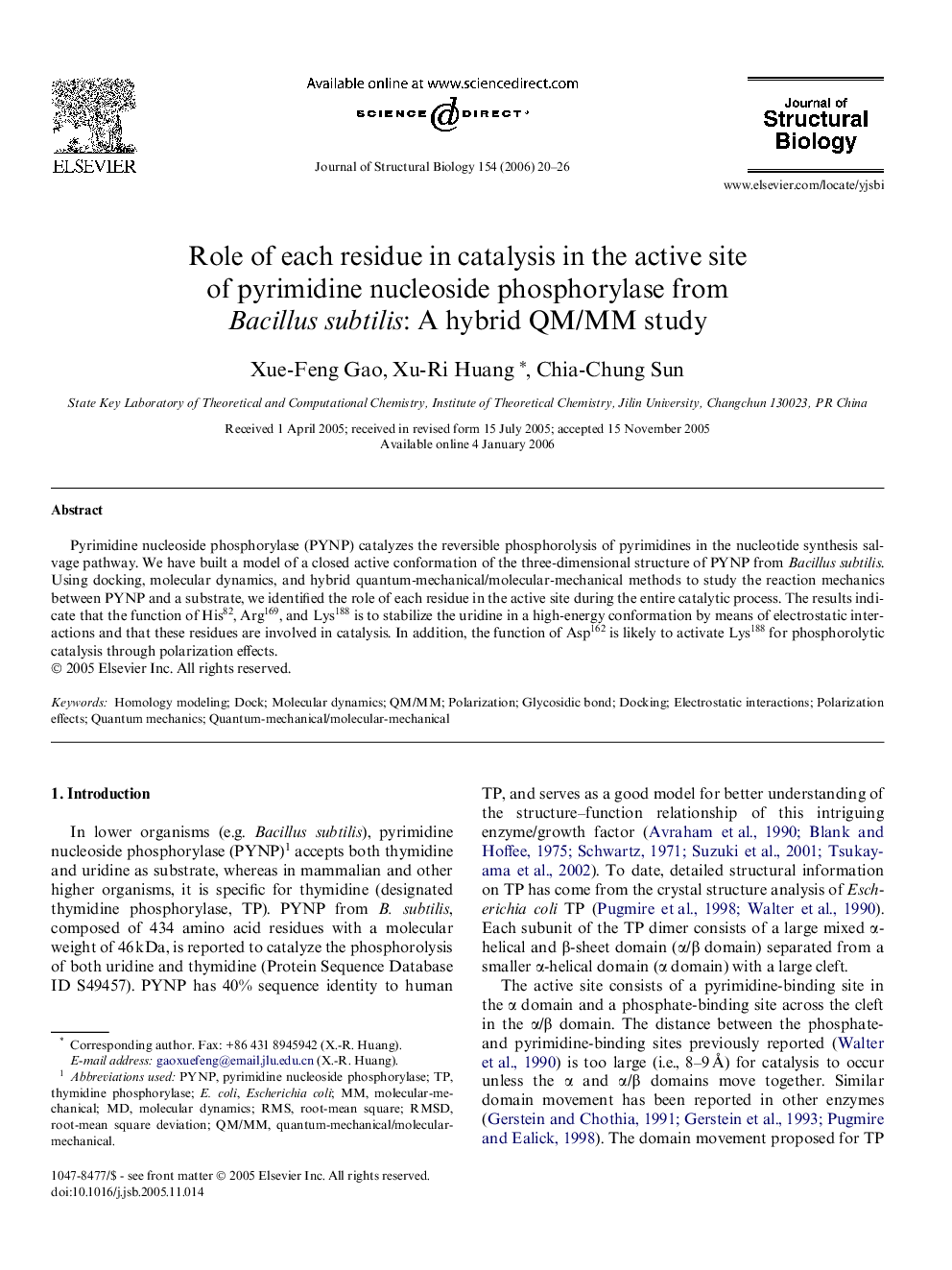| Article ID | Journal | Published Year | Pages | File Type |
|---|---|---|---|---|
| 2829524 | Journal of Structural Biology | 2006 | 7 Pages |
Pyrimidine nucleoside phosphorylase (PYNP) catalyzes the reversible phosphorolysis of pyrimidines in the nucleotide synthesis salvage pathway. We have built a model of a closed active conformation of the three-dimensional structure of PYNP from Bacillus subtilis. Using docking, molecular dynamics, and hybrid quantum-mechanical/molecular-mechanical methods to study the reaction mechanics between PYNP and a substrate, we identified the role of each residue in the active site during the entire catalytic process. The results indicate that the function of His82, Arg169, and Lys188 is to stabilize the uridine in a high-energy conformation by means of electrostatic interactions and that these residues are involved in catalysis. In addition, the function of Asp162 is likely to activate Lys188 for phosphorolytic catalysis through polarization effects.
